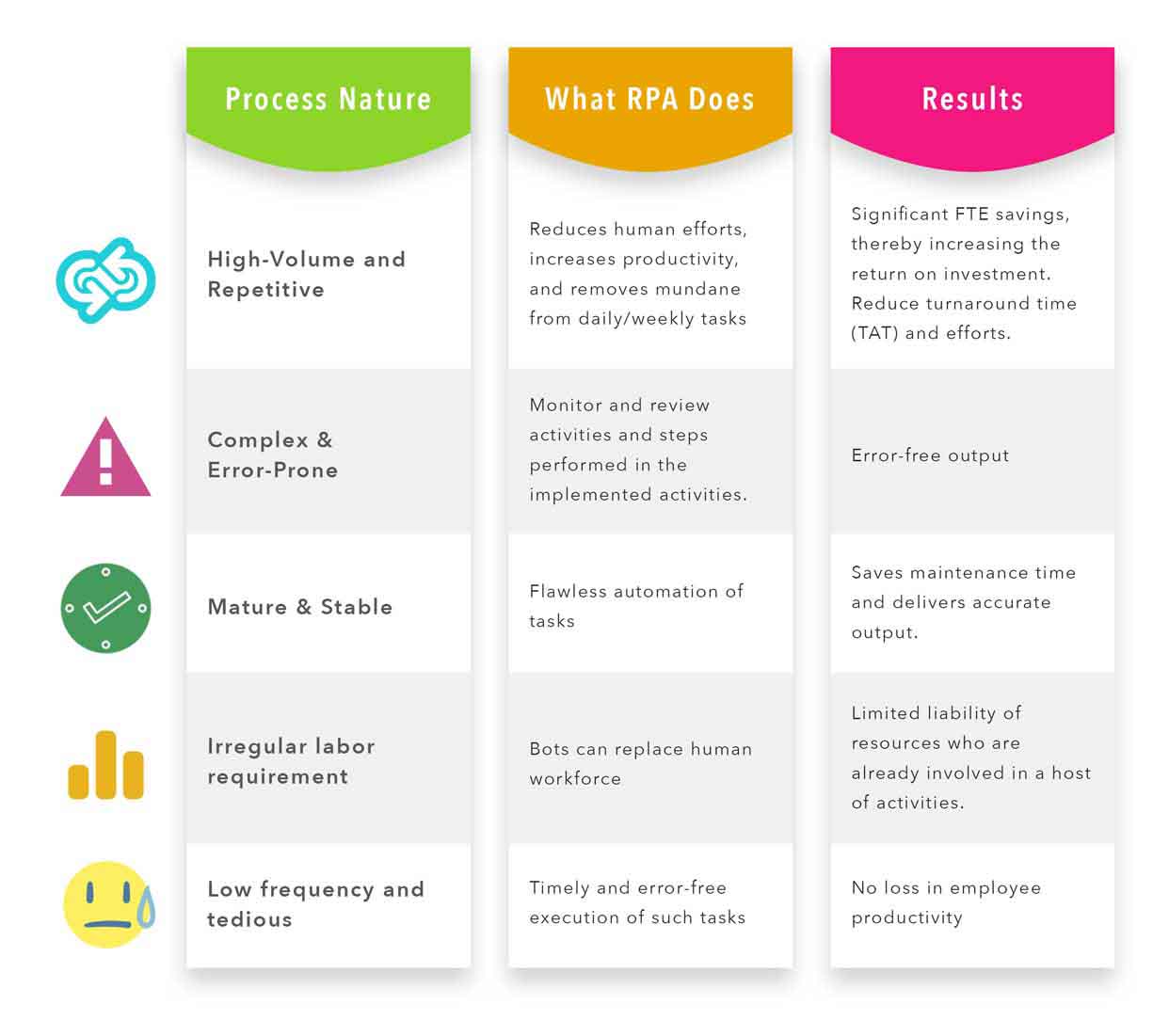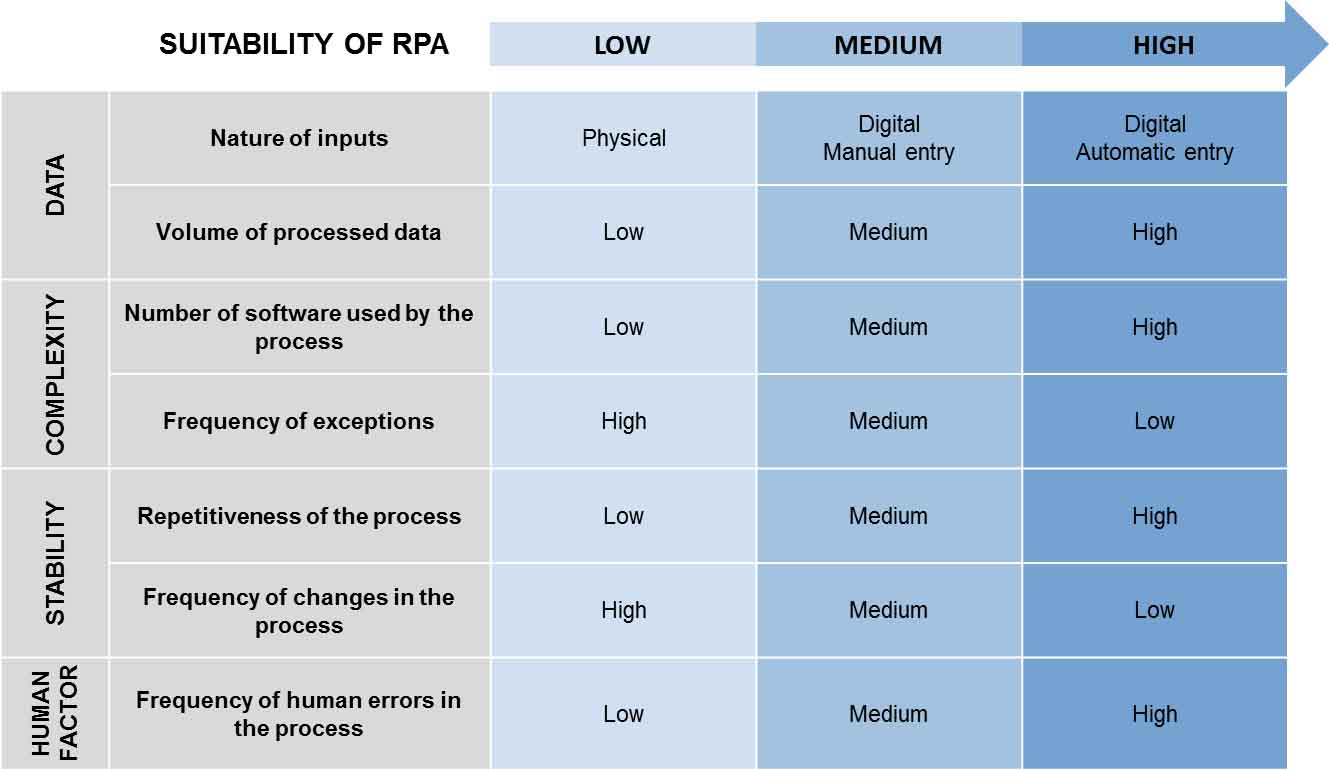“Automation is good, so long as you know exactly where to put the machine.”— Eliyahu Goldratt.
This statement perfectly underscores the need for a detailed analysis of processes before choosing them for Robotic Process Automation (RPA).
The benefits of smart automation for businesses is not unbeknownst to organizations. In RPA initiatives, a business-driven approach assumes higher importance than a technology-driven one. Selecting the process for automation can make or break the entire digital transformation journey. So, while there may be countless tasks and processes in your organization that can be automated, RPA should be considered only for the ones where implementation would provide remarkable business benefits.
Some of the characteristics that such processes share are that they are rule-based, data-driven, stable, and consistent. These processes run on digital structured input and present results in the digital form. Standardized and structured electronic inputs (such as Excel, PDF, etc.) have limited variations and maintenance and hence are suitable for automation. RPA is suitable for processes that are clearly defined and well-documented.
From the business lens, it’s not difficult to guess that such processes are not only impactful but also high-volume. Some of the common and widespread examples are employee onboarding, data entry and extraction, invoice and application processing, customer data maintenance, file validation, etc.

Benefits of efficient RPA implementation
The below-listed benefits also serve as a checklist while deciding on the automation prospects of any process. RPA should only be implemented if the process delivers one or more of these advantages.
Manpower reduction: A significant drop in manpower requirement can be achieved particularly in processes that don’t involve human judgment.
Quality control: For processes involving rule-based quality control with slim chances for deviation, RPA is highly valuable.
Accurate regulatory compliance: Most mundane regulatory compliance tasks can be automated to improve productivity by close to 40%-50%.
High-volume attainment: Tasks that are repetitive and high in volume make an ideal candidate for RPA. Bots raise efficiency as they work round the clock and grossly cut down chances of error
One corollary benefit of each of the above points is that RPA substantially minimizes costs for organizations.
78% of those who have already implemented RPA expect to significantly increase investment in RPA over the next 3 years.
Regardless of the specific process automated, leveraging RPA to deliver high business value, drive significant cost benefits, and align with business goals will allow the technology to have maximum impact on operational activities. The key is to standardize a process and then optimize it further via bots. If you try to automate a badly run process, errors are likely to occur, and eventually, you will be left with a bad taste of automation.
A recent global RPA survey by Deloitte concludes that 92% of the respondents reported improved compliance, 90% admitted an improvement in work quality/ accuracy, 86% reported improved productivity, and 59% reported cost reduction.
What kind of processes should you automate?
Here are the decisive factors for organizations in choosing the best-suited processes for Robotic Process Automation to enjoy maximum benefits.

Another means of understanding processes and their suitability for RPA is in terms of data input, process complexity, process stability, and human intervention. This is detailed out in the below table which will further help you in choosing the best processes for a successful RPA implementation.

Source: https://indeed.headlink-partners.com/2017/01/24/methodology-how-to-handle-the-rpa-journey/
Tasks not fit for RPA: A proper analysis of the nature and application of RPA tells you that processes or tasks that are constantly evolving and non-standard aren’t fit for automation. Goods examples of such tasks may be front-office jobs that involve human judgment, complex thinking, decision-making, and are non-repetitive.
Also, first-time users should start with processes that are relatively simple and then make the gradual move to complex ones. This helps eliminate the process loopholes and facilitates better integration of RPA with the process tasks.

